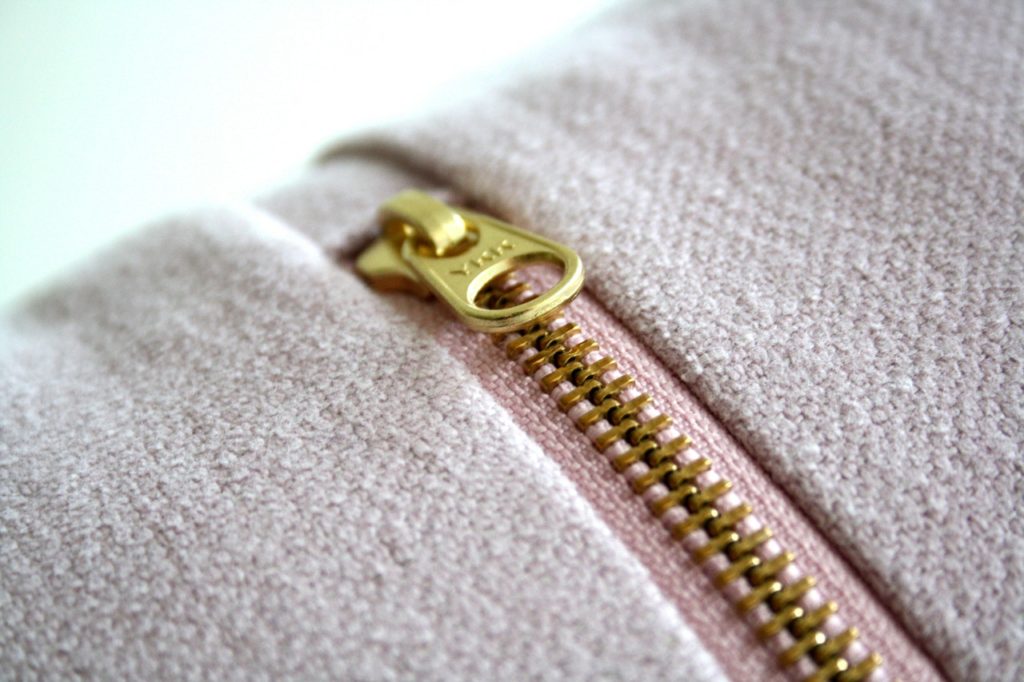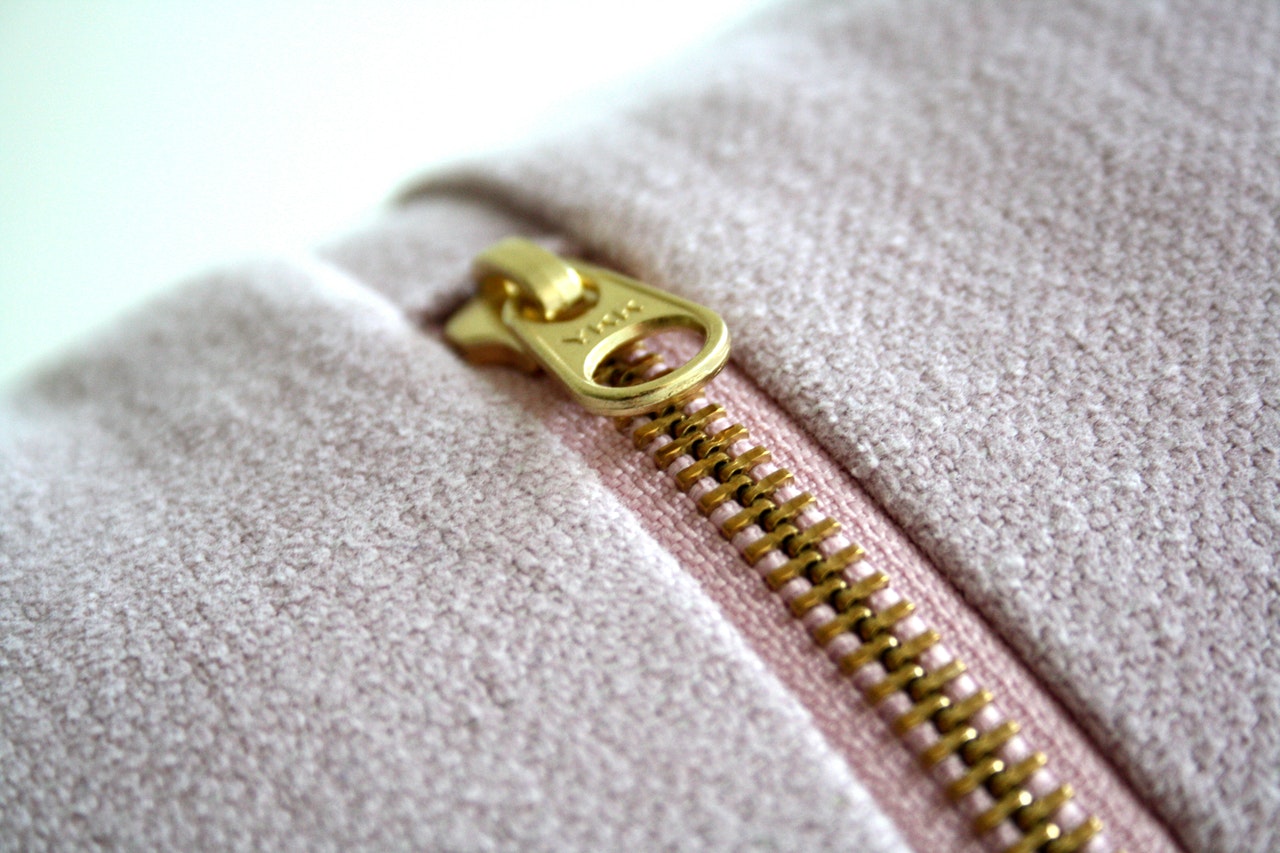
I learned this today. Zippers weren’t called zippers until about 30 years after they had been invented and they got their name from a boot.
A number of different people claim to have invented the zipper, but Elias Howe Jr. technically holds the patent for what can be called the closest thing to an early zipper. Elias Howe Jr. is more famous for having invented the sewing machine in 1846 but, in 1851, he received a patent for an “automatic, continuous clothing closure”. It was more of a drawstring than a zipper, but it did have some similarities to the modern zipper and can therefore be called the first zipper. Howe was too busy working on and selling his sewing machines to spend much time marketing the zipper and it was soon forgotten.
In 1893, Whitcomb Judson invented a fastener he called a “Clasp locker”. He used it on shoes. It was basically a hook and eye system with a tag that you could pull. The pull tag had strings attached to it. When it was pulled, the strings would tighten and pull the hooks and eyes together until they were attached. He introduced his idea at the 1893 Chicago World’s Fair. It didn’t really get much attention. It wasn’t easy to mass-produce and it kept popping open unexpectedly. Judson managed to get some investment from a businessman called Colonel Lewis Walker, and he founded the Universal Fastener Company. This company goes through several name changes to become the largest manufacturer of zippers in the world in the 1940s, but we are getting ahead of ourselves.
Judson changes the Universal Fastener Company’s name to Talon and moves the company to the city of Meadville in Pennsylvania. He hires Gideon Sundback, a Swedish-American electrical engineer, and makes him head of design. And it is Gideon Sundback who comes up with the design that we would all think is a zipper.
In 1909, Gideon Sundback invented something called the “Plako”. It still used hooks and eyes and still had a propensity to pull apart. He kept working on it and he solved the problem in 1913. He gave up on the idea of hooks and eyes and used two rows of interlocking metal teeth that were pulled together by a metal slider. He called it the “Hookless Fastener No. 1”. In 1914, he reworked his design and called it the “Hookless Fastener No.2”. This version had a small dimple scooped out of the bottom of each tooth and a small nib on the top. This gave for a lot more stability and strengthened the zipper. This is basically the zipper that we all still use today. The nib of one tooth rests in the dimple of the tooth above it. The teeth are crimpled onto a strong cloth tape that attaches to the clothes. The structure means the teeth are tightly locked together and can’t work themselves free.
Sundback also invented the machine that makes the zippers. After a year of starting to sell the zipper, his machine was turning out 100m of zipper a day.
Sundback called his device the “separable fastener” and received a patent for it in 1917. The Universal Fastener Company changed its name into the Hookless Fastener Company and started to mass-produce the hookless fasteners.
The hookless fasteners were a huge hit but were not used on clothes in the beginning. They were mainly used for boots, bags, and pouches. And this is where the name comes from. In 1923, the B. F. Goodrich Company started to use hookless fasteners on its new rubber booths. They called these boots “zippers”. They sold them as boots you can get “on and off in a flash” because of the hookless fastener. The name became associated with the fastener itself, and stuck.
In 1937, the Hookless Fastener Company changed its name to Talon. The short name meant it could be printed on the zipper pull tag. However, zippers were still not very common on clothes. They were slowly added to men’s and children’s clothes because they made dressing a lot easier. However, they were not added to women’s clothes very often because a real lady shouldn’t be easy to undress. If they were added to women’s clothing, they were usually concealed. It took World War 2 for them to become mainstream and Talon became the largest zipper producer in the world. However, the supplies of the necessary metals dried up during the war, and other countries took up zipper production. Talon never really recovered and disappeared in the 1960s.
So, the zipper was technically invented by Elias Howe Jr., but that was not what we would recognize as a zipper. The actual zipper was invented by Gideon Sundruk. He tried to rework an eye and hook system that had been invented by Whitcomb Judson but couldn’t do it, so he changed the whole design. It took a while for zippers to catch on and in the beginning, they were only used on boots and bags. The B. F. Goodrich Company started making rubber booths with hookless fasteners on them and they called the boots “zippers”. This name stuck and became synonymous with the fastener. The word zipper wasn’t in common usage until 30 years after the zipper was invented. And this is what I learned today.
Sources
https://en.wikipedia.org/wiki/Elias_Howe
https://eriehistory.blogspot.com/2015/05/the-talon-zipper-company.html
https://www.thoughtco.com/history-of-the-zipper-4066245
https://en.wikipedia.org/wiki/Talon_Zipper
https://www.wonderopolis.org/wonder/who-invented-the-zipper
https://en.wikipedia.org/wiki/Zipper
https://en.wikipedia.org/wiki/Whitcomb_L._Judson
https://en.wikipedia.org/wiki/Gideon_Sundback

